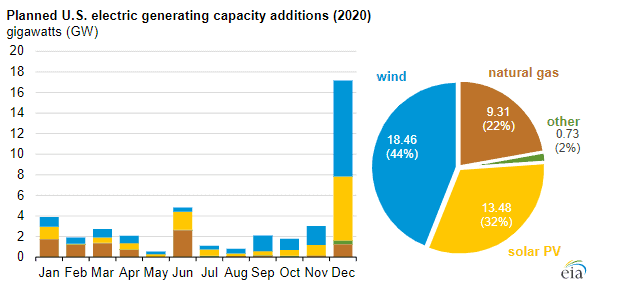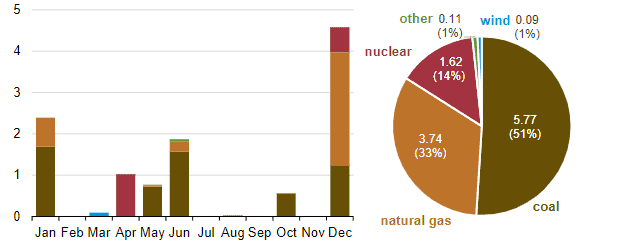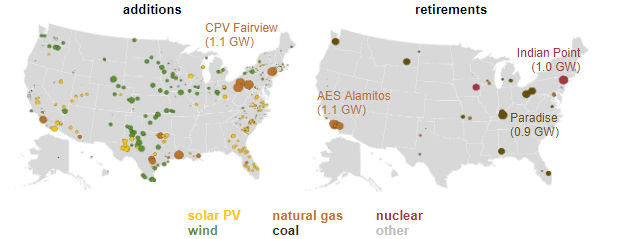Over 75% of the energy to be installed in the US in 2020 will be wind or solar, a new report by the Energy Information Association (EIA) shows.

EIA expects the addition of 42 gigawatts (GW) of new capacity in the US in 2020. Solar and wind represent almost 32 GW of these (76%). Wind accounts for the lion’s share of this (44%), followed by solar at 32%. Natural gas will only account for 22% of this new energy.
However, it’s important to note that this represents capacity — not actual electricity generated. This means that there will be ups and downs in renewable energy, which is not the case for something like nuclear or natural gas, which are generally more stable.
Nevertheless, this is a telling story: despite interventions from the current administration, attempting to artificially support the fossil fuel industry, new energy is predominantly renewable — and coal no longer really has a seat at the table when it comes to novelty.

The expected prediction of retired energy production is also telling. Of the 11 GW set to be retired in 2020, more than half of it (5.8 GW) will be coal, much of which comes from Kentucky and Ohio. Another 3.8 set-to-be-retired GWs come from older natural gas units that came online in the 1950s or 1960s. So the bulk of the decommissioned energy will be from fossil fuels.
However, two nuclear plants totaling 1.6 GW are currently scheduled to retire in 2020.

The impact of these shifts indicate a longer trend for the foreseeable future. Most of the new energy is renewable, and most of the decommissioned energy is fossil fuel. This is also making an impact in the country’s greenhouse gas emissions. After decreasing by 2.1% in 2019, EIA forecasts that energy-related carbon dioxide (CO2) emissions will decrease by 2.0% in 2020 and by 1.5% in 2021 (under normal weather conditions).
However, while significant, this shift is not ambitious enough to set the US on a trajectory to reduce its emissions enough to avoid catastrophic climate change.
Much of the change involves renewables replacing coal — and while that’s certainly a step in the right direction, natural gas remains almost untouched. EIA projects that the share of U.S. total utility-scale electricity generation from natural gas-fired power plants will remain relatively steady, it was 37% in 2019, and we forecast it will be 38% in 2020 and 37% in 2021.









